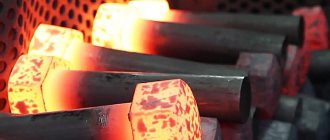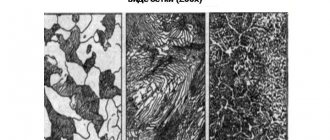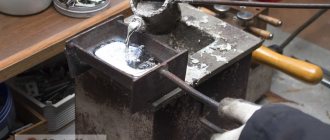How to quickly and efficiently paint plastic parts of a car to match chrome? This question is very often asked by many car enthusiasts who, using all possible methods, strive to update their car or carry out its restoration.
The process of painting car parts made of plastic is carried out using the same technology that is applicable to metal products. Despite this, there are still several differences. They need to be taken into account during the work process.
What tools and materials may be required
ATTENTION! A completely simple way to reduce fuel consumption has been found! Don't believe me? An auto mechanic with 15 years of experience also didn’t believe it until he tried it. And now he saves 35,000 rubles a year on gasoline! Read more"
To carry out the process of painting parts in chrome, you need to prepare the following tools:
- Special technical hair dryer;
- Spatulas;
- Spray;
- Planers for efficient stripping.
As for materials, painting plastic in chrome may require not only the paint itself, but also special acrylic varnish, primer, sandpaper, anti-silicone, solvent, putty, antistatic wipes and pieces of material.
The correct technology for applying chrome-farby to various surfaces and materials
The procedure begins with skimming and priming. A ball of background paint is applied to the surface so that it can be seen through the chrome deposit. Before polishing the lining, proceed after completely drying the background ball. Next, cut out the chrome. If necessary, perform this manipulation several times. In this case, apply a new layer to the skin after the previous one. How to finish the varnish.
Nuances of preparing various surfaces:
- The metal must be lightly coated with a product such as anti-silicone, then rinsed and dried.
- Apply a moisture-proof stain to the wood before the primer.
- Smooth plastic should be treated with degreasing agent so as not to damage the polymers.
At the place where the mirror preparation is installed, it is not necessary to use a saw. It sticks to the freshly coated surface, causing it to lose its shine.
Preparatory work
Immediately before painting, it is necessary to carry out certain preparatory work:
- High quality washing and drying. This is necessary to identify all defects, both on a new part and on one that has already been used.
- Cleaning and filling. These processes are carried out if there is a need to clean all existing problem areas with special sandpaper, the index of which is 100. The sanded surface must be degreased, and all defects should be filled.
- Repairing cracks in varnish. If you are painting a part that has already been used, you should pay special attention to the possible presence of cracks. They can appear if the plastic is strongly bent, where the element itself remains intact, but the varnish cracks. They can only be dealt with through serious troweling processes using coarse sandpaper.
- Primer. If you are painting parts that do not have defects, it is enough to prime it with a regular primer. After drying for 20 minutes, you can begin painting. The primer must be sprayed in a very thin layer to avoid smudges.
You should not carry out the stripping process by hand, since all the unevenness of the spatula will be preserved. It is the use of a plane that makes it possible to completely smooth them out.
Experts recommend combining crosswise hand movements with conventional circular movements for the stripping process. If you don’t have a plane at hand, you can use small pieces of very dense rubber, the size of which is approximately the size of your palm.
How to paint wheels
Unfortunately, the galvanic method of applying paint to alloy wheels cannot be carried out in a garage. For this reason, if you want to paint your rims yourself, the diffuse method is the way to go. It represents the use of “chrome” paint.
In order for wheel painting to be successful, you will need the following equipment:
- chrome paint in cans;
- drill with the necessary attachments;
- sandpaper;
- black backing;
- rags;
- surface degreasing agent.
In general, this type of disc painting is almost no different from the usual one (except for the use of a substrate). You will need to place it before directly applying the paint.
There are several stages of applying paint:
- cleaning the surface from dirt and rust . This is done using sandpaper. After cleaning, the cast disc must be dried and washed;
- surface priming . It is done in 3 layers, which must be applied after the previous one has dried and allowed to dry for 5 minutes. To speed up drying of the primer, you can use a hair dryer. Before applying 3 layers, you need to polish the disc with fine-grained sandpaper;
- laying the substrate and polishing . Performed to create a perfectly flat surface before painting;
- application of chrome paint . After spraying paint from a can, you need to polish the surface again until shiny;
- final varnish coating . This is done to fix the paint and provide a glossy effect.
If you don't want to do the painting yourself, take the car to a professional who will do the galvanizing. Performing such a procedure on your own is very difficult and dangerous to health. The process is carried out with the addition of aggressive substances, and toxic waste remains after the work. When galvanized, you will get discs with a mirror-like shine (and not silver, as in the case of painting).
Chrome plating: before and after...
It is also possible to carry out chrome plating using specialized equipment. It includes stands with pressure gauges, containers of several liters intended for special substances, as well as guns and sprayers for painting and blowing parts. Such equipment allows you to paint the wheels with high quality yourself, but it costs several thousand dollars.
Author: Lagoda Vladislav Fedorovich
Higher education: secondary specialized. Specialty: Auto mechanic. Good knowledge of the design of foreign-made passenger cars. Work skills: replacing the timing belt of the cylinder head, chassis wheel alignment and maintenance. Repair…
Features of the chrome plating process
Nowadays the process of painting plastic parts with chrome is carried out using one of two methods. The essence of the first lies in the following steps:
- The most common black paint is applied to the surface;
- After this layer has completely dried, the part is carefully polished until it resembles glass;
- A high-quality polished surface is carefully wiped with a material soaked in special alcohol;
- Immediately after this, a special construction hair dryer is used. Through it, the surface is heated, after which chromium is sprayed.
It must be remembered that chrome plating of parts must be done with a relatively small amount of paint, which is in a spray bottle and supplied under fairly high pressure.
- Once the chrome is completely dry, the part should be thoroughly polished again.
Chrome plating of plastic products from Fusion Technologies
Contacting our company is an opportunity to order high-quality and visually attractive treatment of plastic parts with a layer of chrome. The equipment and technologies used by our company meet modern standards. The characteristics of the finished product are not inferior to similar samples manufactured in the factory. At the same time, the cost of the company’s services is affordable for most clients. We guarantee the stability of the coating throughout its entire service life under any climatic and mechanical loads.
Process Features
Both plastic parts and metal surfaces can be chrome plated. Work at home should be carried out in a well-ventilated area, since during the process chemicals that can adversely affect health will inevitably be released into the air. If the reagent comes into contact with the skin, dangerous burns are possible. In addition, chemical poisoning of the body is not uncommon.
The best place to do the work yourself is a garage or other technical premises. As a precaution, you should use a respirator, safety glasses, rubber gloves and an apron.
To carry out the work you will need the following equipment:
- a container that can be used as an ordinary 3-liter glass jar or a plastic bucket (the choice of a specific container depends on the configuration of the part that will be chromed);
- a wooden box (it needs to be insulated with fiberglass and then insulated with sand);
- heating element, since chrome plating is carried out at a high temperature (a regular heating element will do);
- thermometer (scale should reach 100 degrees Celsius);
- plywood sheet;
- clamp;
- bracket for fixing workpieces;
Preparation rules
To chrome plating plastic at home, you need to make a special brush. The handle of such a brush, into the hollow inner part of which the electrolyte will be poured, can be made from a tube made of plexiglass. The bristles of the brush must be conductive, so it can be made from a bundle of copper wire, having first removed the insulation from it.
Brush design for chrome plating large plastic parts
An important element of the installation for chrome plating plastic is a current source, which can be a powerful transformer or a car battery. The operating diagram of such an installation will have some differences when using different current sources.
In the case of using a transformer as a current source, a diode is additionally connected to the hand prepared in advance, and when using a battery, this element is not used in the electrical circuit. The anode is connected to the step-down winding of the transformer using a cable, and the cathode is fixed to the workpiece.
Components for preparing the electrolyte: sulfuric acid, distilled water and chromic anhydride
After you have selected and prepared the container in which chromium will be applied to plastic, it must be filled with an electrolytic solution. The composition of such a solution, as well as the temperature to which it will be heated before chrome plating, depends on what characteristics the finished coating should have.
Compositions of various electrolytes for chrome plating
In addition, the plastic must be degreased before processing. To do this, perform the following steps.
- The following chemicals are taken in equal quantities - caustic soda, soda ash, silicate glue.
- All prepared components are dissolved in water and mixed.
- The resulting solution is brought to a boil, then the product to be treated is placed into it.
When the plastic is degreased, you can begin chrome plating, but before that you need to put on all the above protective equipment.
The process of chrome plating parts
First of all, you need to connect the workpieces with a wire to the transformer. Then we pick up a brush, also attached to the transformer, and pour electrolyte into it. Apply an electrolyte layer to the surface. This must be done carefully and smoothly - with movements up and down. The electrolyte layer must be sufficient to ensure that the applied coating is preserved for the maximum possible period of time. During operation, we monitor the presence of electrolyte in the brush and, if necessary, add the composition again.
Note! It is recommended to make at least thirty passes of the brush over each surface area.
After applying the electrolyte, rinse the surfaces under running water. Then let the parts dry. Rub already dry surfaces with a piece of cloth until they shine.
Methods and their advantages
A beautiful chrome car makes a strong impression and makes a great statement. But we should not forget about the sense of moderation. A completely chrome-plated body is already too much. This is dangerous when driving: drivers of oncoming cars can be very blinded. But some elements shimmering in the Sun will look great. A powerful effect will come from the highlighted base chrome base. To understand how to paint in chrome, you need to learn the methods and secrets. There are several ways to chrome a car:
- film,
- galvanic,
- electrochemical,
- catalytic,
- using HS technology.
Useful tips
- In some cases, it is not possible to do chrome plating yourself, and then you can choose an alternative way to give the part a spectacular look - nickel plating.
- Chrome plating allows you to reflect the light of the Sun, but over time this property of the treated surface is lost. Therefore, the chrome surface needs to be looked after regularly. Maintenance consists of periodically washing the parts in warm water using household chemicals. After washing, parts should be wiped with a lint-free cloth. Rough cloths or brushes may damage the chrome surface.
- Low temperatures negatively affect the appearance of treated surfaces - they become dull.
- After completing the chrome plating work, you need to polish the surface.
Chrome plating of plastic parts is a feasible task, but quite labor-intensive. You will also need a significant amount of equipment, some of which (for example, a transformer) cost a lot of money. Therefore, if there is no need for regular chrome plating or a small amount of work, it is easier to turn to specialists for help.
Do-it-yourself chrome plating
Today there are many ways in which every car enthusiast can distinguish his vehicle from the gray mass of cars on the road.
One of the most affordable and popular is chrome plating of alloy wheels - applying a special coating to a car that helps create a mirror effect with a silver or gold tint. This tuning has been popular for many years, making it a classic. This decoration for car rims not only looks great on any car, but also protects the rims from corrosion and various types of damage.
Chrome wheels on a car
Among the advantages of chrome coating, experts and car enthusiasts highlight:
- providing a mirror effect;
- protection from damage and rust;
- resistance of disks to weather changes;
- possibility of painting with your own hands;
- relative price availability of materials.
Chrome plating allows alloy wheels not to be afraid of temperature changes when the brakes heat up. However, it is worth remembering that some types of chrome are quite expensive and require re-application to the part if even one scratch appears on them.
When choosing chrome parts, a car enthusiast needs to make a decision: paint existing products or buy ready-made ones. When purchasing, everything is simple: purchase it, put tires on the rim. There are several methods of coloring.
Chrome wheels on a car
Types of chrome paints
When choosing paint with a mirror effect, you need to take into account the features and properties of the solutions presented on the shelves of construction markets. There are two main groups, which include all materials used for chrome painting.
One-component compositions
Most often, these coloring agents are sold in cans and are not suitable for all types of work; they have their own advantages and disadvantages. The first include the absence of the need for special tools for applying liquid chrome (the packaging is already adapted for spraying), as well as compactness and ease of storage (the paint in cans is hermetically sealed and will not dry out). Inexpensive one-component chrome-effect paints are sometimes packaged in cans.
The disadvantages of these materials are the following:
- the resemblance of a surface painted with one-component chrome paint in a can or can to real polished metal in most cases turns out to be distant;
- the process of painting by spraying is quite complicated, a good result is possible only if all the subtleties of the technology are fully observed;
- due to lightning-fast drying, the material sometimes simply does not have time to adhere to the base, as a result, the coating peels off even with weak mechanical stress;
- Purchasing chrome-effect aerosol paint to cover large surfaces is an impractical step, since canned formulations are more expensive per gram.
The process of painting plastic surfaces
For work you will need a paint sprayer, a hair dryer, spatulas and planes, which are used to clean the surface at the preparatory stage.
Preparation
First of all, you will need a thorough wash. This applies to both new parts and those that need restoration.
If there is such a need, the surface is cleaned of the old coating, treated with sandpaper, degreased (wiped with alcohol) and leveled with putty, and then brought to a smooth state with fine sandpaper.
For plastic treated with varnish, cracks in the coating are very common. In this case, you will have to work on eliminating them using coarse sandpaper.
The surfaces prepared in this way must be primed, spraying the composition in a thin layer to avoid drops and streaks.
Coloring
There are two ways to create a chrome coating for plastic parts.
- The surface is painted black, polished to perfection, treated with alcohol and heated using a hair dryer. Paint is sprayed onto the heated base, and after drying, it is polished again to a mirror shine.
- Varnish is applied to the black-painted and dried base, dried again, polished, and then a very thin layer of paint is sprayed under high pressure. When it dries, repeat the procedure as many times as necessary. The part is placed in a special dryer where the temperature is maintained at 60 °C and kept for one hour. This is followed by a thin layer of varnish, after about 20 minutes - a second one (at this stage the coating becomes shiny and glossy), after another quarter of an hour the varnish is applied a third time. After final drying, the surface is polished.









